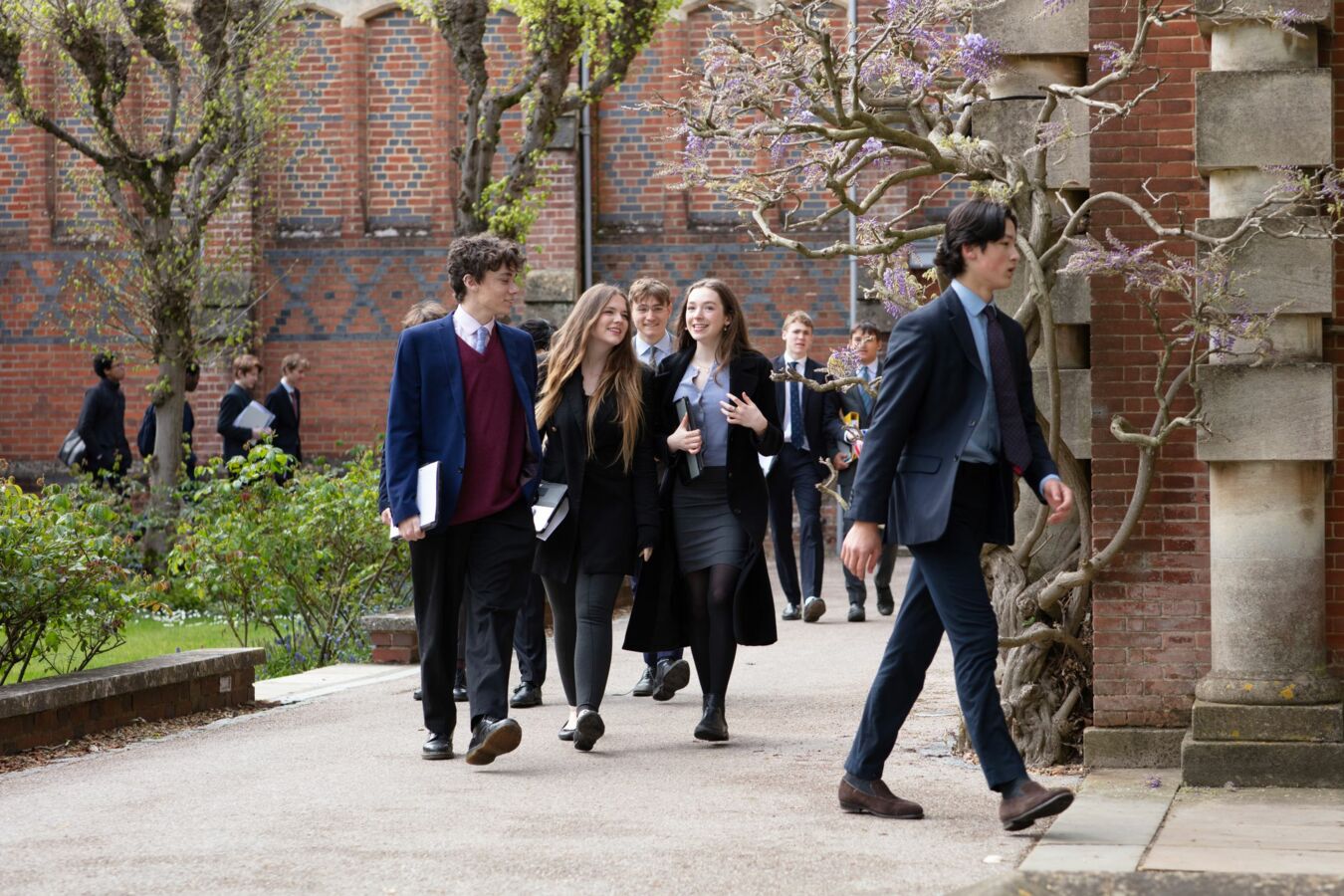
Houses are at the heart of life at Winchester College and will be where pupils spends much of their time. The importance of conversation is central to the house philosophy. Of particular importance are house lunches, with their lively and informed conversations between pupils and staff.
A mix of ages
Every house is home to around sixty pupils aged between 13 and 18 years. It is where pupils across the year groups eat each meal. This is also where they establish lifelong friendships, prepare for many inter-house teams, socials and competitions and learn how to get along with people from a variety of backgrounds.
Surrounded by friends
In the first year, each child will join others in a dormitory, with access to a personal, separate study space. Communal living provides the youngest children with a highly sociable and connected environment, while retaining a private, supervised space for individual study. As they grow and a greater sense of independence and responsibility is established, they move in to more private rooms. When they reach their final year in the school, pupils will adopt roles as senior prefects, responsible for supporting the younger children in the house.
College
Pupils who are invited to join College live in the school’s original 14th century boarding house. Overlooking the Medieval courtyard, College remains central to school life.
It is home to seventy pupils who demonstrate exceptional academic talent. Each has passed a unique selection process, known as Election. On joining the school, they are known as Scholars and are identified by the gowns they wear.
Though modernised, the accommodation in College still impresses upon pupils the unique experience that life as a Scholar brings. They inhabit the same rooms that have inspired pupils since the College first opened its doors in 1394.
Chernocke House (Furley's)
A short walk to school is Chernocke House. It is popularly known as Furley’s after its third Housemaster, J.S. Furley (1894 – 1909) and was originally inhabited by Revd HJ Wickham, who designed the unique desks all first years use for their evening study. Adjoining the extensive sporting facilities on Kingsgate Park, Chernocke House is home to sixty pupils with a large garden and a separate Sixth Form common room.
Moberly's (Toye's)
On historic Kingsgate Street, Moberly’s is one of the school’s oldest boarding houses. A conglomeration of repurposed shops and residential properties, it was founded by The Revd Harry Moberly, the first Housemaster (1860-1880) and first-class cricketer. It is popularly known as Toye's, after the second Housemaster Jack Toye (1880-1899) and has three music practice rooms.
Du Boulay's (Cook's)
Designed by eminent Victorian architect, William White, and Grade II listed, DuBoulay’s is situated a short walk from the College. Founded by its first Housemaster, Revd J.T.H Du Boulay (1862-1893), it is informally known as Cook's, after the second Housemaster A.K. Cook (1893-1909), who published a book on the school’s history. The house has its own squash court, gym, pool table, two music rooms and a large garden.
Fearon's (Kenny's)
Fearon’s is one of four boarding houses, purpose-built in the 1860s, known as ‘Commoner Block’, Commoners being the term used for boys boarding outside the original College house. Fearon’s was founded by The Revd W.A. Fearon, the first Housemaster (1868-1882) who eventually became the school’s headmaster. Today, it is informally known as Kenny's, after the second Housemaster Thomas Kensington (1882-1904). The Kennyites have use of their own five-a-side astroturf football pitch, large garden, music room, library, TV and games room
Morshead's (Freddie's)
Located near to Kingsgate Park’s sporting facilities and the Grade II listed Music School, is Morshead’s. It is one of the four Commoner boarding houses. Popularly known as Freddie’s, it was founded by Frederick Morshead, the first Housemaster (1868-1905) and later Mayor of Winchester. Boys enjoy the use of a snooker room and a grass tennis court.
Hawkins' (Chawker's)
A short walk from the main campus is Hawkins'. Established in 1869 and founded by The Revd C.H. Hawkins, the first Housemaster (1869-1900), the house is informally known as Chawker’s. This was the boys’ nickname for the founder, who was an ardent advocate for the study of literature and drama. It offers a house library, extensive music practice space (accommodating six pianos as well as a band rehearsal room), a Japanese-style zen courtyard, and a large mature garden with outdoor gym facilities.
Sergeant's (Phil's)
Sergeant’s faces the sports facilities of Kingsgate Park and accommodates sixty boys, with a games room with football and snooker tables. The House was built by G.E. Street, an English architect most widely known for his design of the Royal Courts of Justice. Sergeant's is one of the four Commoner boarding houses.
Bramston's (Trant's)
Bramston’s is situated on St Michael's Road and adjoins Sergeant's boarding house. It was founded by Revd John Trant Bramston, the first Housemaster (1869-1908) and is informally known as Trant's. It has its own squash court, music room and large recreation room with table tennis and pool tables.
Turner's (Hopper's)
A short walk to the College, Turner's became a boarding house in 1869 as part of the expansion of the school in the 1860s and ‘70s. Founded by E.J. Turner, the first Housemaster (1869-1903), it is informally known as Hopper’s, a nickname bestowed by the boys because of his bouncing gait. It accommodates sixty-three boys and has its own tennis and squash courts, large garden and cricket net.
Kingsgate House (Beloe's)
Situated close to Science School as well as the sporting facilities, is Kingsgate House. Purpose-built in 1905, it is the most recent of all the boarding houses at Winchester. Founded by The Revd R.D. Beloe, the first Housemaster (1905-1914), after whom it is affectionately nicknamed, it has large gardens and a tennis court.

